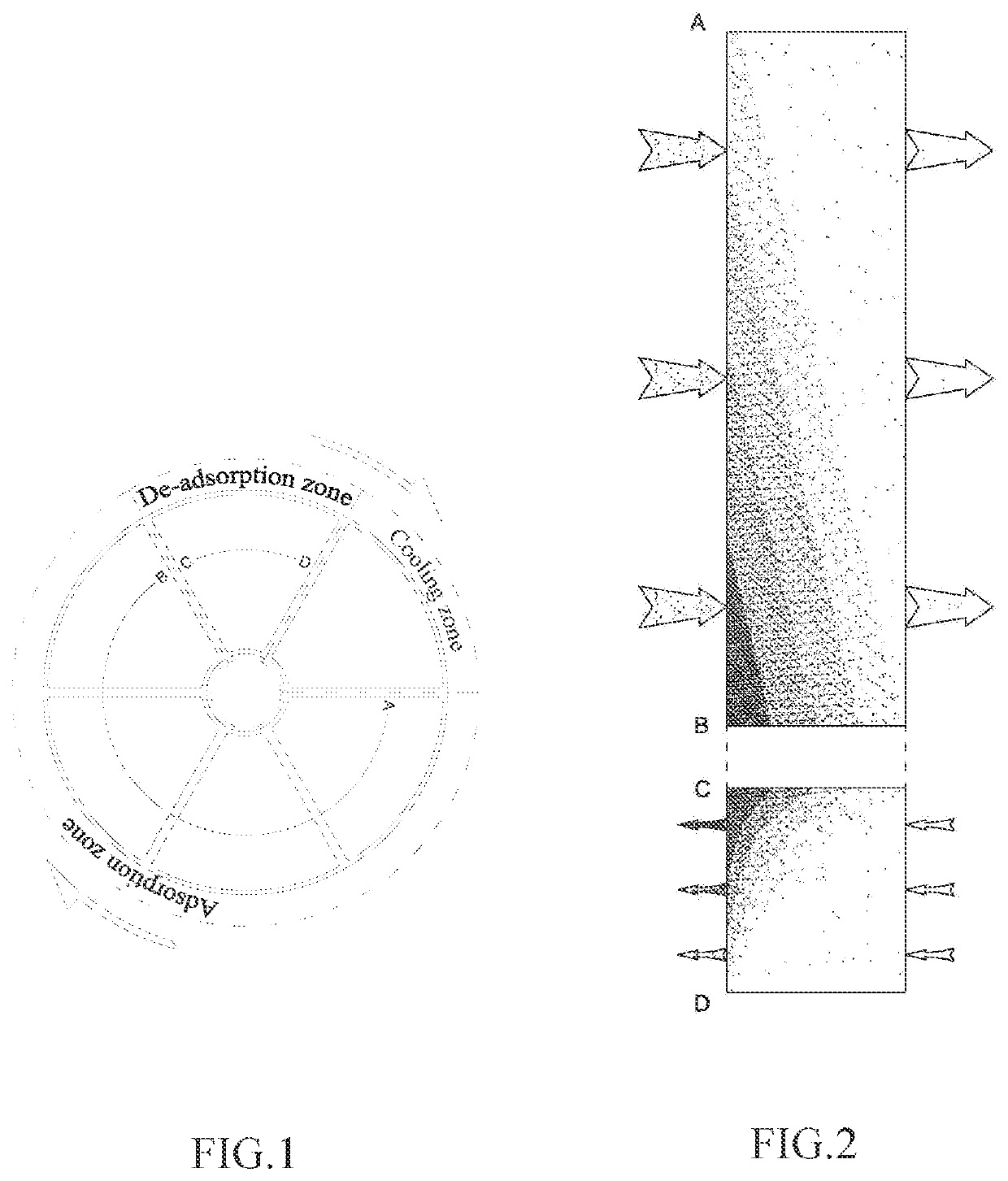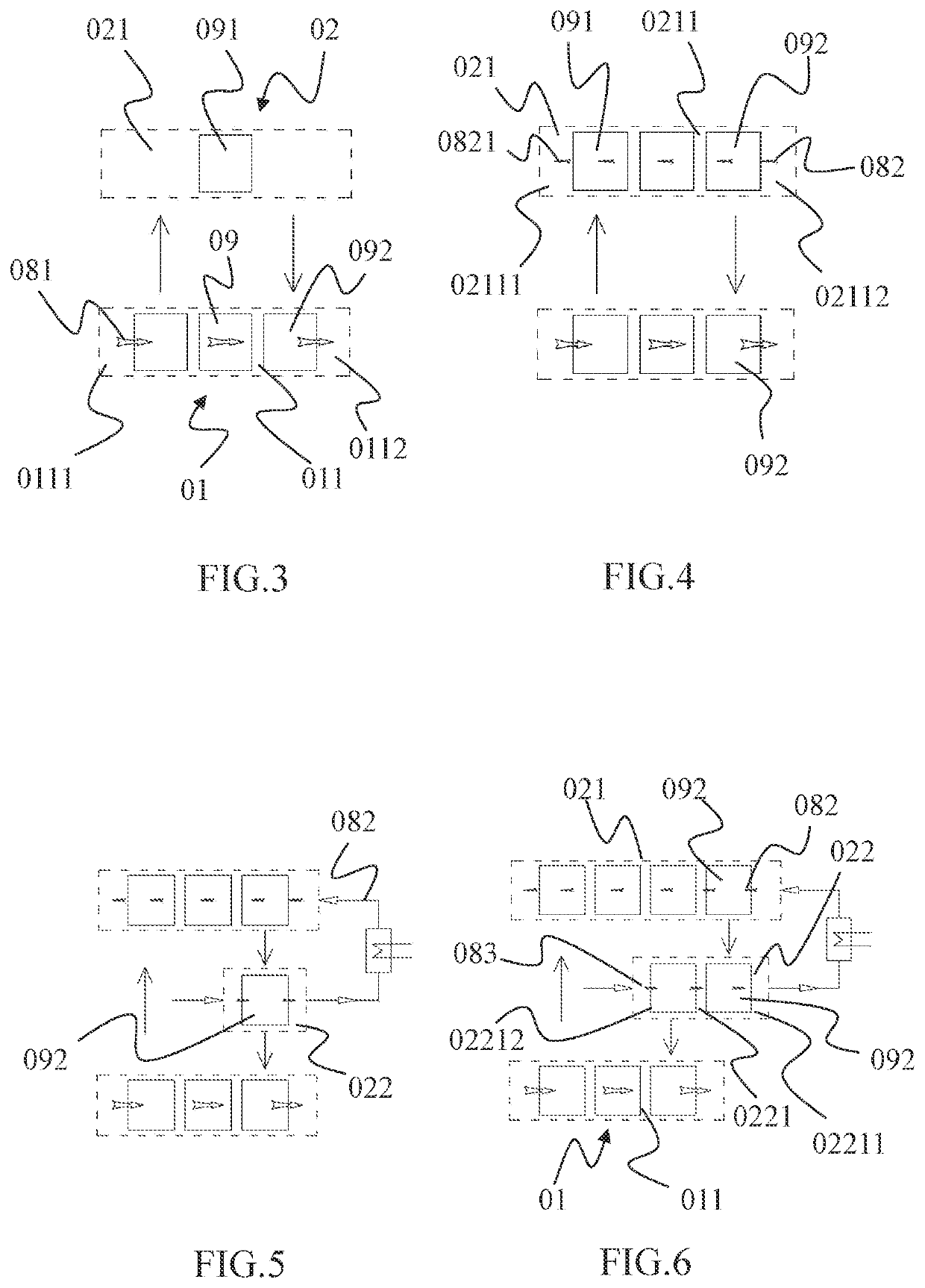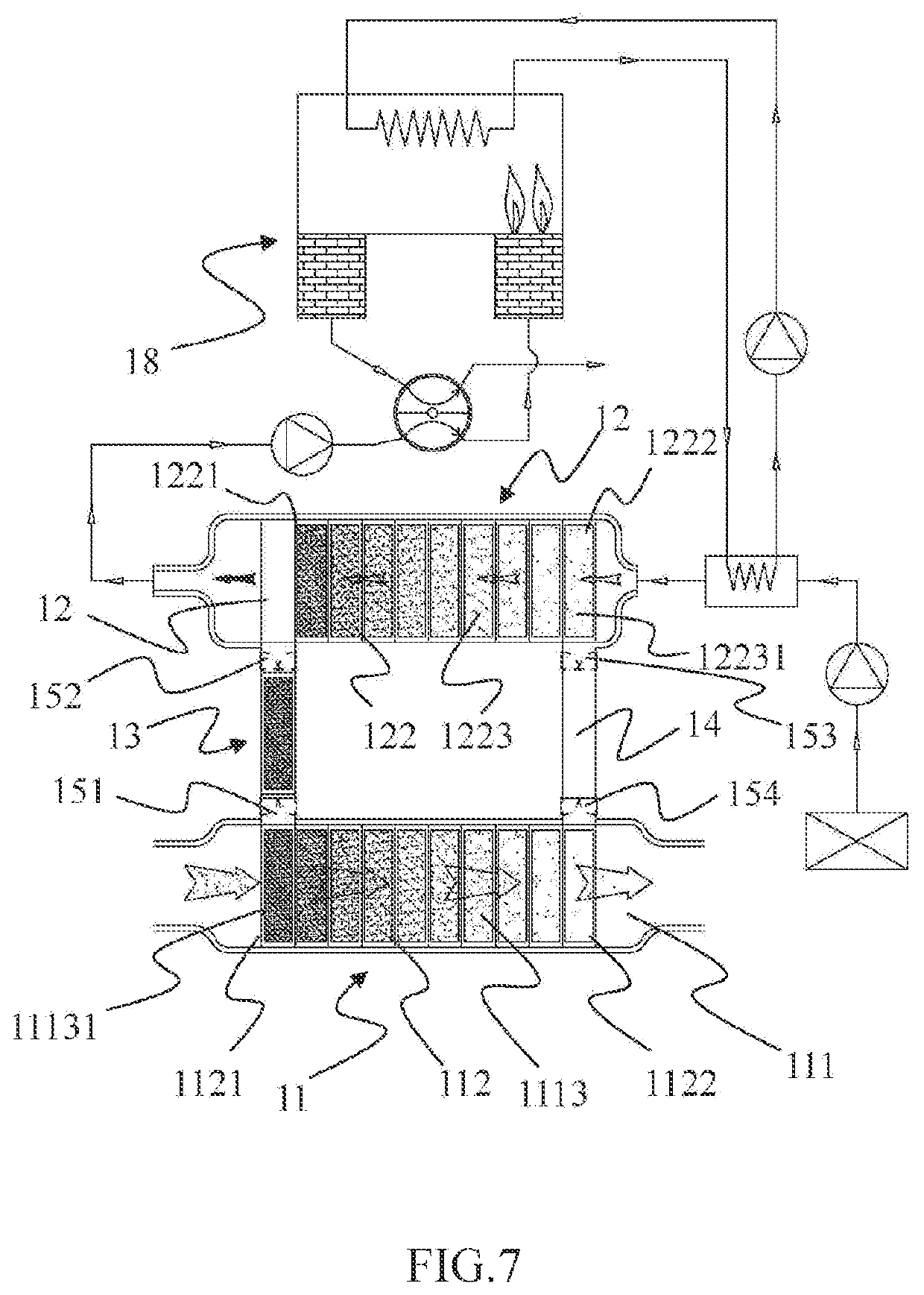Gas adsorption and separation apparatus and applications thereof
a separation apparatus and gas adsorption technology, applied in the direction of chemistry apparatus and processes, separation processes, dispersed particle separation, etc., can solve the problems of malodor intrusion into the surrounding environment, the concentration ratio is greatly reduced, and the emission concentration of treated waste gas exceeds the standard seriously, so as to reduce the energy consumption, the effect of low desorption gas capacity and high concentration of organic pollutants
- Summary
- Abstract
- Description
- Claims
- Application Information
AI Technical Summary
Benefits of technology
Problems solved by technology
Method used
Image
Examples
embodiment 1
[0064]FIGS. 7 and 8 show a unit moving type gas adsorption and separation apparatus.
[0065]Referring to FIG. 7, the apparatus comprises an adsorption apparatus 11, a desorption apparatus 12, a saturation transition chamber 13 and a regeneration transition chamber 14. The adsorption apparatus 11 comprises an adsorption chamber 111 and an adsorption series 112 accommodated in the adsorption chamber. The adsorption series 112 comprises a head end 1121, a tail end 1122, and two or more adsorption units 1113. The unit at the head end 1121 that has completed saturated adsorption is a saturated adsorption unit 11131.
[0066]The desorption apparatus 12 comprises a desorption chamber 121 and a desorption series 122 accommodated in the desorption chamber. The desorption series 122 comprises a saturation end 1221, a regeneration end 1222 and two or more desorption units 1223. The unit at the regeneration end 1222 that has completed desorption is a regenerated adsorption unit 12231,
[0067]Two ends ...
embodiment 2
[0073]FIGS. 9 and 10 show a unit supply and recovery type gas adsorption and separation apparatus.
[0074]One of the important conditions for the specific application of the gas adsorption and separation apparatus shown in Embodiment 2 is that the flow rate of waste gas to be treated and the concentration of organic pollutants are substantially stable, because thermal desorption needs to use the organic pollutants in the waste gas as heating fuel to keep a substantially stable high-temperature environment. if the waste gas is discharged intermittently or the flow rate and the concentration fluctuate greatly, a de-adsorption process will be adversely affected, and it is generally necessary to add additional supplementary fuel, The unit supply and recovery type gas adsorption and separation apparatus disclosed in Embodiment 2 can adapt to this situation very well.
[0075]The specific solution of the unit supply and recovery type gas adsorption and separation apparatus is that an adsorptio...
embodiment 3
[0076]FIG. 11 and an apparatus for adsorption and separation of a thermal regeneration gas.
[0077]In the gas adsorption and separation apparatus shown in Embodiment 1, the regenerated adsorption unit that has completed desorption is still in a. high-temperature state when it enters the regeneration chamber through the transition chamber and is added to the adsorption series. Although a large flow of polluted air which has been substantially adsorbed quickly takes away its heat and there is no significant impact on the adsorption process, the loss of heat energy of the system is caused. This has a certain negative impact on reduction of energy consumption, which is one of the original purposes of the apparatus according to the invention.
[0078]The technical solution to overcome this technical disadvantage is to replace the regeneration transition chamber 14 in Embodiment 1 with a thermal regeneration apparatus 17, and transfer, to the adsorption series, the heat contained in the high-t...
PUM
 Login to View More
Login to View More Abstract
Description
Claims
Application Information
 Login to View More
Login to View More - R&D
- Intellectual Property
- Life Sciences
- Materials
- Tech Scout
- Unparalleled Data Quality
- Higher Quality Content
- 60% Fewer Hallucinations
Browse by: Latest US Patents, China's latest patents, Technical Efficacy Thesaurus, Application Domain, Technology Topic, Popular Technical Reports.
© 2025 PatSnap. All rights reserved.Legal|Privacy policy|Modern Slavery Act Transparency Statement|Sitemap|About US| Contact US: help@patsnap.com



